Lisbon
29 min. read
Notes from 8-13 May
Boiler(s) abroad
The last days at Purdue went by in a blur, and before long I was back at the airport, waiting in lines, checking in bags and feeling generally gross as is often the case with air travel. Despite the sadness of farewelling being very present for much of the transit, being back here was a poignant return to reality1, that this chapter of my life, this long journey abroad was well past its zenith and rapidly approaching the terminus. Not that this is a particularly grey mark for me, just that being at Purdue allowed one to be easily convinced that these good times would keep on rolling indefinitely.
To stand in Indianapolis Airport again, to walk past the Indy sign that leads to the gate wings, brought back a lot of beautiful memories for me. It spoke to me of discovering a new part of the world, of commencing this glorious expedition, and of the various trips I had made across the country over the prior semester. Very shortly thereafter, I was back in the air and on the way to Washington D.C. for a pretty quick layover before the main leg to Lisbon. If ever there was a good indication of the fact that a reasonably long period of time had elapsed, it was that the movies on the in-flight entertainment offered by United had changed significantly. Barring my US Visa, my passport is currently very empty-looking, and it had been my hope that over the course of my backpacking I would be able to fill it up with a motley assortment of stamps. Of course, on arriving in Lisbon, it all came back to me that this is not how it works in Europe, and that only a solitary addition would be made to this collection 😢.
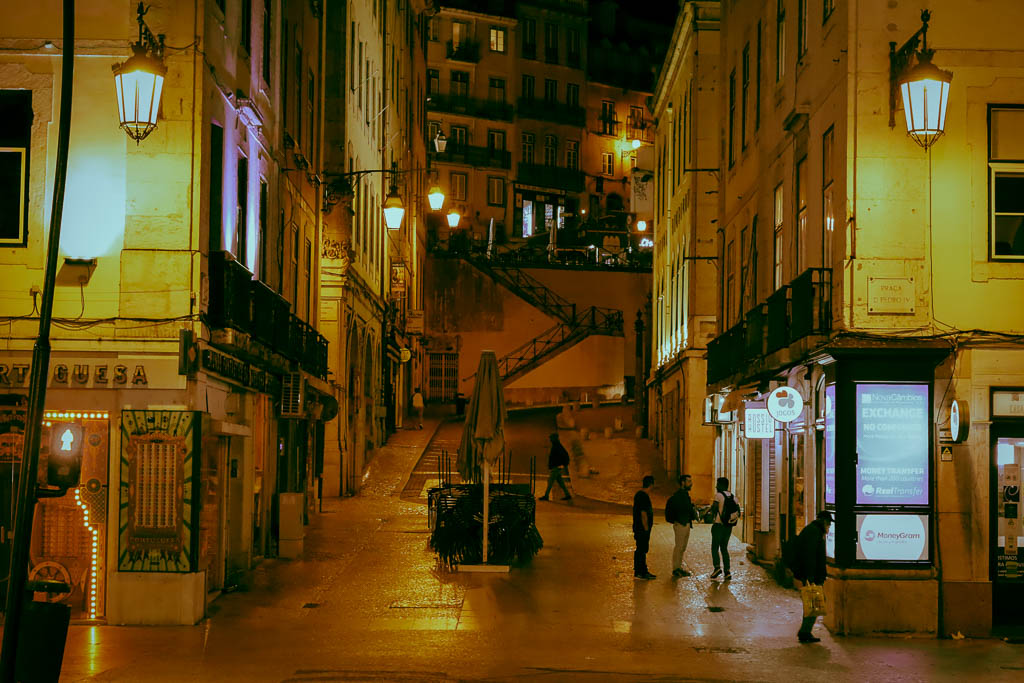
The first thing that hit me exiting the airport was that it had been nearly 10 years (China, 2014) since I had been a country where I didn't speak its primary language - all previous trips had been either to America or Germany. This was, admittedly, a little jarring. But, I made my way fairly painlessly to the hostel I was staying at (more on this later) and checked-in. Any sort of travel angsts I had were dimmed somewhat by the fact that the very first person I spoke to on my backpacking expedition, the receptionist at the hostel, turned out himself to be a graduate of none other than Purdue University. Such a bizarre coincidence...
The hostel experience
Hostels to me are a fascinating matter. In principle, they sound simple enough: dorm rooms filled with bunk beds, communal amenities and social spaces. Yet, experience has shown that the execution of even these simple concepts can vary wildly, both towards the good and the bad. Over the course of the coming issues, I will pause to give brief overview of each hostel I stay at, sharing some general impressions about what struck me whilst there. First up on the list, was the Goodmorning Solo Traveller Hostel.
Goodmorning Solo Traveller Hostel
One of the top-rated hostels in all of Portugal and an absolute pleasure to stay at. Cannot recommend this place highly enough!
| Positives | Negatives |
|---|---|
| Great location, right next to both a Metro station (Restauradores) and the station from which trains departed to Sintra. Plenty of good sights within comfortable walking distance. | More a reflection on my roommates, but I was usually woken at least once during the night by someone stumbling in a little drunk from a big night out - not much to be done about this on the hostel's end! |
| Buffet breakfast (and dinner) available for a reasonable price of €7.50, and good food at that. You can also get this all-included package where you pay maybe an extra €14 per night and get free breakfast, lunch and dinner plus unlimited drinks from the bar. | A more expensive hostel - I stayed there 5 nights and paid €234, though I didn't book all that far in advance |
| Quite hygienic and well-functioning amenities that were cleaned daily. Friendly staff and 24/7 reception! |
On top of that, they offered a €6 wash and dry service, provided two daily activities like a walking tour or surfing, bar crawls at night, the beds had draw curtains around them2 and you got a free drink on arrival. Pretty exceptional stuff, really, and at the time of writing I am not giving too much away when I say that it hasn't gotten better than this.
People who frequent hostels
Previous stays at hostels (except for one in Noosa, Australia which I am not going to include here) had always been with friends, if not larger groups. Therefore to this point it had been some time since I interacted with the types of individuals that are to be found in these grand institutions of Europe. The cast ranges from the pleasant, to the not so, and I'd be remiss not to introduce you to a few of its (stereotyped) members.
- The average backpacker - what one probably thinks of first in association to hostels, an individual that is in the midst of a trip from city to city. Usually a little older than me, but not very far into their professional careers if at all. Generally likeable types, and there are a lot of Australians to be found in this category. Since I was in Lisbon well before the peak of Summer when countless souls from all over the world flock en masse to Europe, there were fewer of these to be found.
- The veteran backpacker - a subcategory of 1), but for someone that has already been underway for several months already. Usually people that are first year out of high school or in between jobs with the capacity to travel for (in some instances) up to a year. This would be pretty epic, but I would imagine myself getting pretty tired of it after at most 3 months.
- The weekender - often from England, but also other places like Germany and France, an individual that, by grace of living in a continent so ferociously interconnected can take a few days off work or duck off on the weekend to Lisbon for a quick getaway. Needless to say I, as an Australian, cannot conceive of this as a possibility and am endlessly jealous of this prospective. I didn't mind talking to these folk, but - especially if they were from England - they were usually just there to go on an absolute bender every night and couldn't have cared less for the sights. Not my cup of tea.
- The digital nomad - this might be a term unfamiliar to anyone Gen X or older, but refers to someone that holds a remote work position and uses this fact to clock-in from exotic locations as far from home/the office as possible. It's an attractive proposition absolutely, and I could certainly foresee myself trying it at some point down the road. It is perhaps no great secret that I don't hold much interest in working out of Melbourne for most of my career. Some negatives though. Firstly, I don't love the instability of it. Constantly being on the road, living out of a backpack for months and months on end, that is not necessarily my idea of having made it. Also, as a concrete example take a girl I met from Miami doing the digital nomad thing. She would have from sunrise until about 4 PM to go out and explore the city or do whatever she had in mind, then from 4 until midnight she would work. Doesn't sound too bad, but I couldn't imagine being in a place like Lisbon and not being able to get fully lost in the place because I had to be back in 30 minutes for my scrum meeting. And for the big complaint - a handful (not all) of the digital nomads I met in Lisbon had their heads so far up their own asses that it was just painful to listen to them. Because they are not doing the usual office/9-5 grind, it appeared to them that they had biggest of brains to cut through the matrix, hack the system and escape the "normies". No. Maybe 10-15 years ago doing the digital nomad life was unique and audacious, but now it has saturated the millennial generation to the point of being not at all uncommon. Get over yourself.
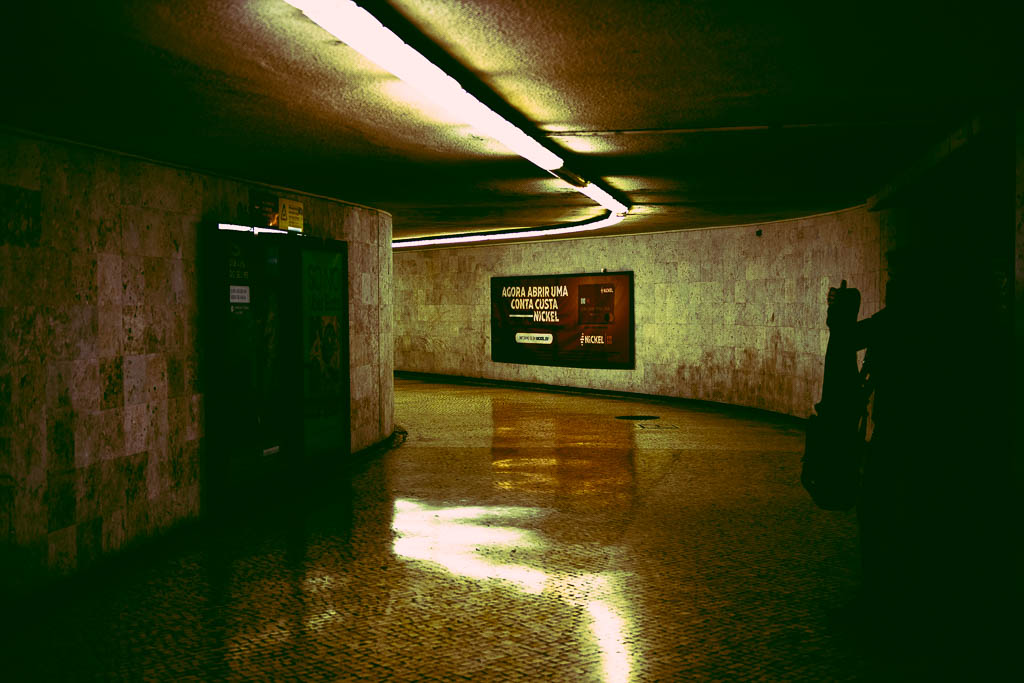
The hostel life
A few things struck me in time at Lisbon that characterise well for me the nature of living in a hostel. It is a fundamentally different lifestyle, and making the most of it forces you in my opinion to invert former principles or modus operandi. In one's normal home, the idea is to move slowly about, taking care to form new relations both near and abroad. Patience yields deeper, more meaningful experiences and connections; with-holding and emotional stoicism are valuable3. By contrast, survival and thriving in a hostel implicitly requires expediting (necessarily so of course given the time constraints of departure) all of this, so instead it favours people that are immensely extroverted and emotionally outward - two things that I am generally not by nature!
This is by no way a bad thing, just a point of difference. It certainly has already forced me here in Lisbon to consciously work to interact more immediately with others from the point of introduction. This all obviously depends on your goal at a hostel. For me, the desired outcome is to setup robust lines of communication (i.e. connect on some social medium) so that future connection (especially if I am travelling to where they are from) is possible. In order to do this, it appears to me that there is a small window usually from the exchanging of names where one must quickly move into extended conversation, lest the other party walk off and find someone more engaging to talk with. I'm still figuring out I think what the best ways of navigating this dynamic are!
How I think about exploring a city
Trying to feel like you know a city whilst backpacking is difficult. I know Melbourne, am joyfully and at times painfully aware of its myriad details, successes and foibles. At this point in my life, I can only really remotely say the same of the three other places I have spent extended time - Bergisch Gladbach (near Cologne), Eichstätt (near Munich) and West Lafayette (in Indiana). Reaching this level of depth necessitates spending some minimum amount of days in one place, yet we would all hope to feel, with respect to as many cities as possible, as intimately connected as we are to our hometowns. This trip through Europe offers the possibility of experimenting with different recipes of expediting this process - because it can be expedited. So, you have a few nights maximum in a place, what do you do? My current heuristic is sketched out below, though it is only a heuristic, meaning it requires on-the-fly alterations and a dose of good luck here and there certainly goes a long way.
The first thing I think has a lot of value for me is on the first morning in the city to go for a decent run around it. There's really nothing but upsides here. It takes maximum 90 minutes and in that time I can cover a good chunk of the central areas, more if my legs are feeling up to it. Taking in broad sweeps of a place in this fashion also serves to allow me to begin forming a mental model of wherever I am. How are the streets laid out? Is there a "heart" of the city, or are things spread out? How much does the city itself value the pedestrian/runner/bike-rider? In a pinch, it also allows you to do some rapid sight-seeing of the big tourist attractions.

Speaking of sight-seeing, my approach here is a little different, a little more intentional than convention. Ever since my weekend trip to New York I have been relentlessly using an app called Atlas Obscura which collates experiences and attractions that are a little more...obscure. Take the list I put together for Lisbon. Some of these just get me so excited to go out and wander around the city and find them, like real-life easter eggs. The reality of some places can often disappoint, but some of the more memorable experiences I have had in cities recently have been facilitated by this site. The mobile app is great as well because it shows all of the nearby obscurities on a map.
My general plan then when I set out to walk around for a day is to pick a rough clustering of these and then set off in that general direction. No particular plan, no phone out for directions4, just taking in the city. Detours, side streets, this is the good stuff. You simultaneously get further away from cliched tourists and closer to the some semblance of the local experience. And people-watching, too, plays hand-in-hand with this notion of discarding linear movement from A to B. Observing those around you, the space they are moving in, it is like watching little scenes playing out in front of you, directed free of charge. I have found that the eye for finding such people in the throes of their day has steadily strengthened the more I have carried a camera around with me. Its presence, along with my desire to photograph and document, necessitates a keenly outward-looking experience.
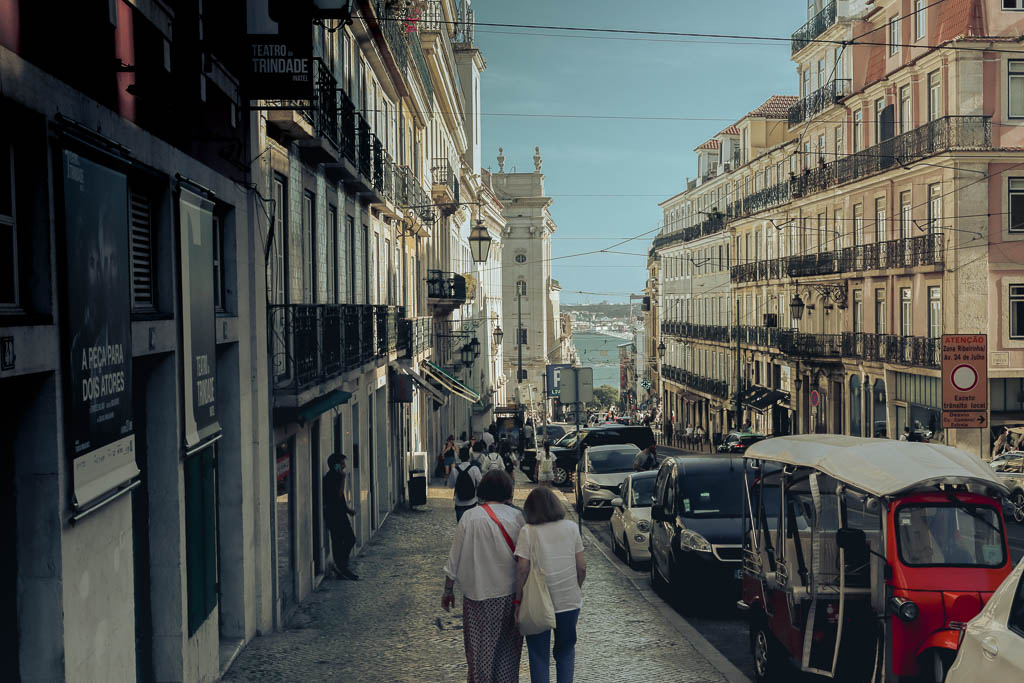
One thing whose merit I am undecided on at the moment are the free-walking tours. "Free", usually insofar as you don't have to tip the tour guide at the end. This is obviously a plus for a university student like I. The other positive is that it gives you a good insight into how a city came to be, of unequivocal importance in our guest for connectedness. The tradeoff though is that often at best they are a few hours, which really eats into the exploration phase I have outlined above. Arguably, one could also find out all of this information with some googling on the train, though I must confess this is more labor-intensive than you might think and the tour guides I have met historically have done a great job of imbuing, well, the history of the place. At any rate, a rough sketch of the important dates/events of the location are crucial. For Lisbon, I think this has to be the fact that the city was essentially razed to the ground through a series of unfortunate events back in November of 1755.
Lisbon as a city
So with that all covered, what did I actually get up to here?
Obscurities
- Hospital de Bonecas: otherwise known as the hospital of dolls, a little shopfront belies a house that has been repairing one-of-a-kind dolls and mannequins for nearly 200 years. A little tricky to find, but once located a fee of EU 3.50 will yield a guided tour of the rooms (and it was a 1-on-1 tour, unsurprising given the lack of visitors) and history of the hospital. It reminded me a little of Chucky or Annabelle5, but the place was fascinating and oozed rich, unique history.
- Pavilhao Chines: less of a bar and more of an antiques store that happens to sell food and drinks. By the way, it too offers Fado on some nights!
- Livraria Simao: Perhaps one of the smallest bookstores on the planet, it consists essentially of a grated window with its offering of books, tucked into a staircase that leads to one of the many Lisbon backstreets and alleyways.
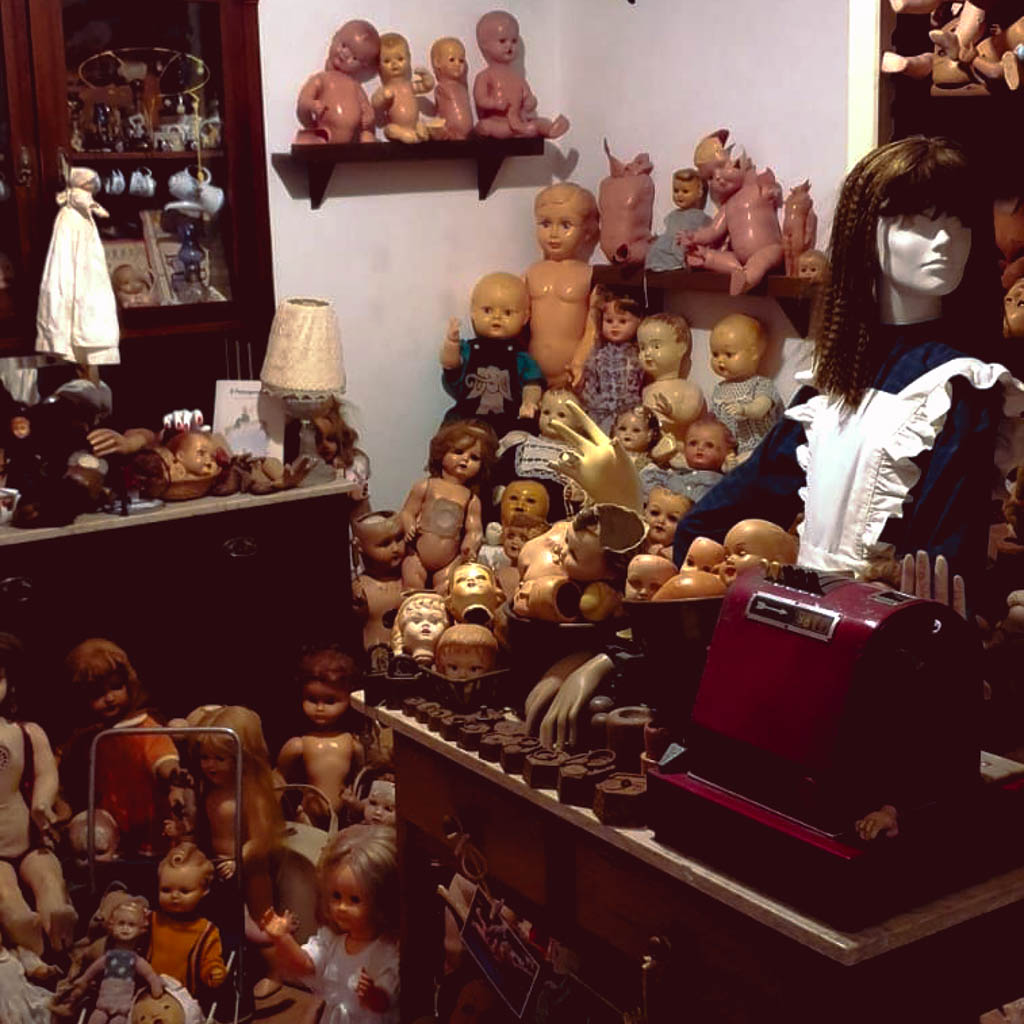
There is one final obscurity, perhaps the most moving and profound thing I will see all trip, but I am afraid I shall keep that for its own dissection at a later date (pardon the pun...).
Historical
As I mentioned above, capturing the origins of the city, how it emerged, is vital to one's relation to the physical location. Here are the best historical items I visited in Lisbon, again in no particular order:
- Carmo convent ruins: One of the few remains left standing as a testament to the earthquake that nearly destroyed Lisbon all those centuries ago. For those who don't know, the earthquake struck on All-Saint's Day (November 1, 1755). Part of the celebrations for the day include the lighting of thousands and thousands of candles across the city, so on this day, Lisbon was hit with a trifecta of tragedy: the earthquake, a city fire caused by the candles falling over, and a series of devastating tsunamis. The tragedy destroyed this convent's library, but today the arches are left standing as an indicator of what once was. Left roofless intentionally to heighten the sense of loss, the place now houses a small museum of artefacts and antiques.
- Livraria Bertrand: the oldest bookshop in the world! Yes, it has been renamed a few times and switched hands of the journey, but with its first opening in 1732 it holds the Guinness World Record.
- National Museum of Ancient Art: Hosting over 40,000 works from around the world, this is a lesser-known museum of Lisbon but one well worth visiting. Could easily spend an entire afternoon here just browsing!

Art and culture
Fado
Emerging in the first half of the 19th century, and rising to sustained popularity in Lisbon even by the early 1900's, Fado is a style of music distinguished by two points - the passion of the vocalists, known as fadistas, and the round-shaped guitars that accompany them. Particularly popular amongst the working class, the emotion conveyed in it is truly moving indeed.
Every night, bars and restaurants across the city offer Fado, of varying quality and quantity of course. Some include it in the price of the meal, some run it as a stand-alone viewing experience. The recommendation I received from the hostel was to go and see it at Tasca do Chico, where some of the more storied fadistas take the stage. Fair warning, that when we went you had to get there pretty damn early to get in for the start of it. The bar itself was pretty nice, offering some small finger food and drinks which tided us over for dinner.

If you want, it's probably easier to arrive later on in the evening, though by this stage the bar may be (I'm not sure) not quite as packed as it was when we were there. The bar does about 30 minutes of songs, then takes a break for a while, allowing people to catch their breath, leave and for newcomers to enter.
All in all, it is a very special and very traditionally Lisbon, experience - there is even a museum devoted to the music!
Also fun fact, the ceiling of the bar is covered (and I mean covered) with sporting scarves from all over Europe. Imagine my surprise when I saw one that was a little closer to home...I'd love to know how it ended up here, especially given the club's current standings, amongst some of the giants of world sport.
Food
Oh, the number of times I have spoken to people about their travels through Europe and been regaled with vaulting lectures on the delicacies to be enjoyed there - and at incredible prices, so I'm told. I think this has been somewhat blown out of proportion. The quality of food here can undoubtedly be quite breath-taking, though I (and admittedly both of these are subjective groundings) have two problems - well, one really. There is a very strong "inverse" relationship between cost, quality and portion size existing here. Want a lot of food? Great, be prepared to fork out lots of euros and therefore even more Aussie dollars. Want large portion sizes at a comfortable cost? Then you sacrifice on quality, certainly to the point that it is for me indistinguishable between what I could find in Melbourne.
None of this was aided by the fact that my appetite had swelled dramatically since being in the States. Say what you will about American food, but at least if I pay $15 there, then that will readily satisfy my hungers. I can pay €15 (and did) and receive two slices of fancy-looking (and yes, very tasty) bread topped with some variety of tapas.
Luckily in Lisbon, I was in luck. Yes, during the day I may or may not have had a Döner or two6, but at night, there was only one thing on my mind - Bon Jardin's. Located about 50m from the hostel, I would dine out on a 1/2 roast chicken, chips and rice for €87 - all topped off with a spicy chilli dressing and lemon sauce. God it was good. By the last night in Lisbon, the guy taking orders saw me strolling down the corridor, punched in my order and had it ready for payment in about 30 seconds. Top stuff.
Sintra
One of the things I cannot recommend enough doing in Lisbon is taking a day trip to Sintra, located no more than an hour's train away. Consisting of a collection of old, beautiful sites mostly dating from the Moorish rule in the region, it is a hill-topped visit that adds a lovely point of contrast to the capital. Ideally for me, the Goodmorning Solo Traveller Hostel was located right next to the Rossio train station that is the main inter-city line to Sintra. It costs about EU 5 (if you already have the Viva Viagem travel card) for a round-trip, and I'd recommend leaving reasonably early in the morning to give yourself ample time to venture this magical place.
Speaking of venturing, there are multiple ways to get around in Sintra. There is the hop-on, hop-off bus service, took-tooks (legal and not so), and walking. In my opinion, if you are fit enough on foot, I would recommend the methods of transport in reverse list order. The hop-on, hop-off bus allows you to see all the sites (of which there are many) in rapid succession and comfortably within the day, but gives you only the most superficial glimpse of them. The took-took would be great but it is most expensive. With walking, you definitely sacrifice the capacity to see everything in one day, but you get the most immersive feel for Sintra, and this is precisely what the trio I was in decided.
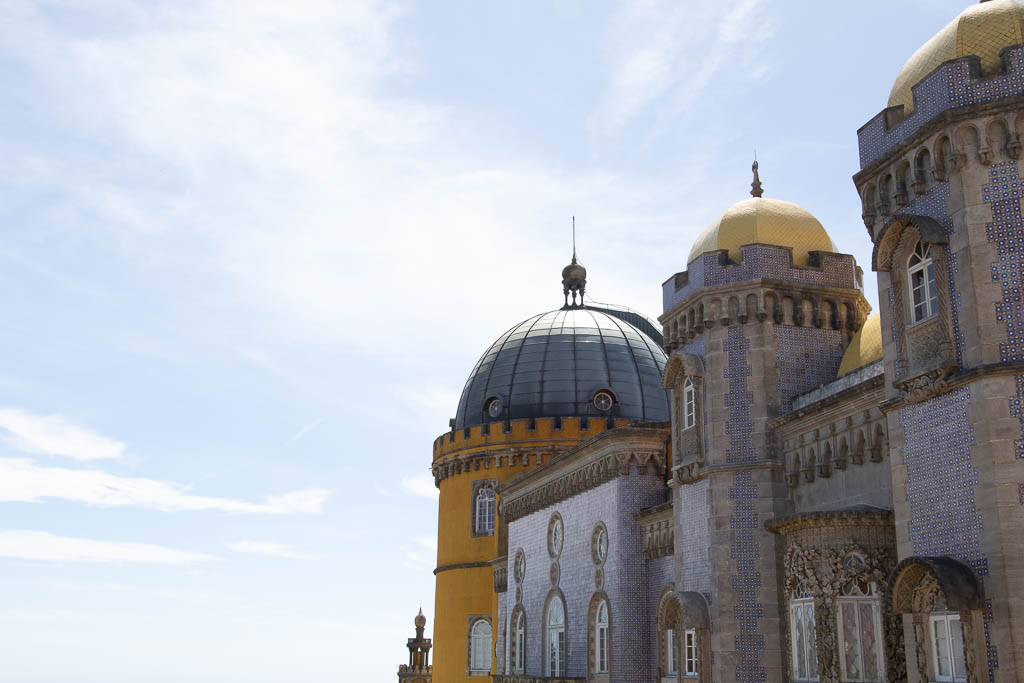
Fair warning though, the streets here are extremely narrow and rather steep at points. We also many times neglected to take the main path leading up, instead preferring to chase a myriad of uncertain footpaths leading off into the forests lacing the hillside. This lead to some pretty awesome discoveries, and more importantly spectacular views.
Let's talk about what my favourite spots here were. I feel as if one is obliged when here to visit the Pena Palace, the most iconic such palace in the area, with its colourful red-yellow facades, rich history and stunning interior. It also is situated right on top of the hill (naturally) and offers the best panoramic views of Sintra and Lisbon beyond. Tickets should be bought in advance, and if done online you get a small discount. I would also suggest getting tickets to multiple sights at one so you incur a further discount.
Next on the list is right next to Pena Palace, the Moorish Castle. I found this historically just as captivating, offering a more brutal, medieval aesthetic that contrasted well against the grace of Pena Palace. Walking along the castle wall is also well worthwhile, staring right down to the coastline of Portugal, though fair warning that it was very windy when we there.
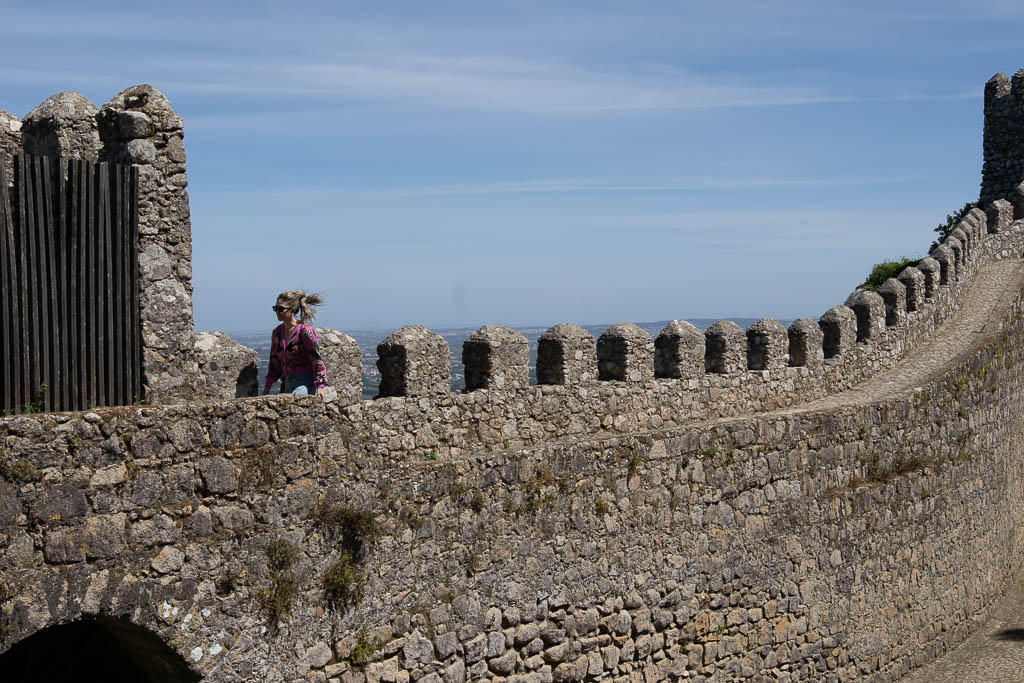
But if possible, I would strongly recommend making it a priority to visit a lesser-known light, Quinta da Regaleira. My group spent a lovely portion of the afternoon wandering around the royal gardens abutting onto the palace, and for this I have no regrets, but it did mean that by the time we made it to Quinta da Regaleira, it had already closed for the day. Again, it offers a strong counterpoint architecturally and visually to the other two on this list, almost reminding me of a haunted house. There are also these two very deep wells that run down a long way, one representing life, the other death. If we could have pulled off making it here in time, I think this would have been the ideal Sintra daytrip in my opinion.
Happily, the trains run back to Lisbon well into the evening, so you can spend some time venturing around the township once most of the attractions have closed. On a sadder note, as we were waiting on the park bench to return that evening we were there, I managed to get up from the bench leaving behind the treasured glow-in-the-dark Nalgene bottle that my friend Josh had given me 🥲.
Footnotes
- Though a return to reality is pretty bold given I was embarking on a 2.5 month backpacking trip through Europe - must be nice!↩
- A big plus for privacy concerns↩
- In my opinion of course.↩
- Unless I have wandered around for way too long and have become seriously lost↩
- Funnily enough, they have their own Annabelle doll created in-house, as well as multiple Chuckies↩
- I found one place with a Döner menu (Döner, chips and drink) for €5 which is pretty unreal value - not very Portuguese I know!↩
- Takeaway! I realised that a lot of places here offer the option to takeaway or dine-in and the former is always more expensive↩
More coming soon...